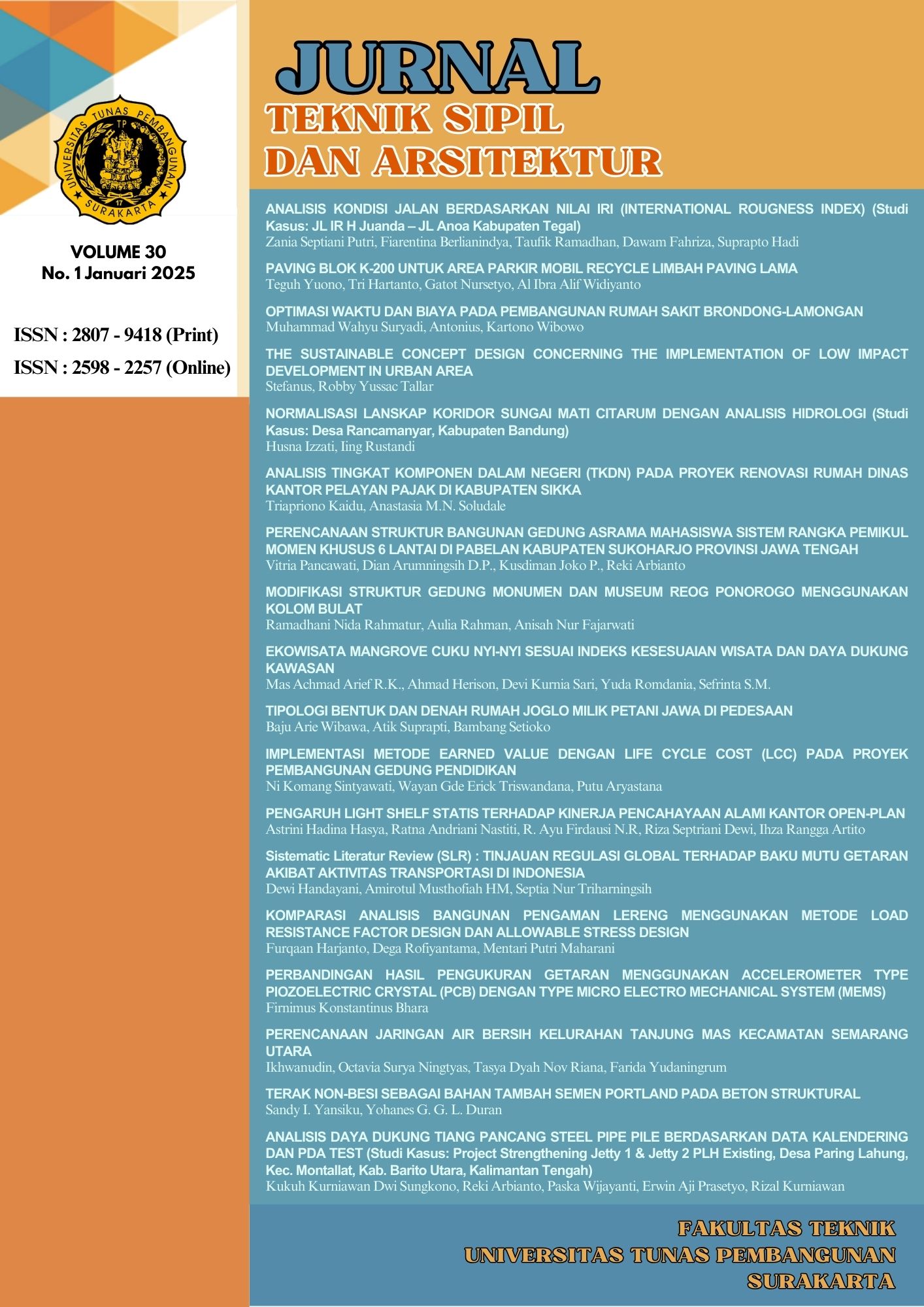KOMPARASI ANALISIS BANGUNAN PENGAMAN LERENG MENGGUNAKAN METODE LOAD RESISTANCE FACTOR DESIGN DAN ALLOWABLE STRESS DESIGN
Abstract
Retaining walls are important structures in civil construction used to resist soil and water pressure. Two common methods used for retaining wall analysis are the Load and Resistance Factor Design (LRFD) and Allowable Stress Design (ASD) methods. LRFD is based on the principle of probabilistic balance and considers an explicit safety factor to ensure that the capacity of the structure is greater than the loads that may occur, while ASD is based on the principle that the stresses acting on the structure should not exceed the allowable stresses for the material and is simpler than the LRFD method, but does not consider the safety factor explicitly and does not account for uncertainties in materials, loads and analysis. With the different approaches in LRFD and ASD analysis, this study aims to compare the analysis results with LRFD and ASD approaches in the case of a secant pile-type retaining wall on the slope of river X where the initial analysis used the ASD approach. Secondary data in the form of soil data and river slope cross sections were obtained from the previous planning consultant, then the analysis was carried out with GEO5 software. The initial model was created first with the same parameters as the previous planning in order to provide the same penetration, displacement and internal force requirements as the planning consultant. The same model in the analysis results will be used as an analysis model for the LRFD approach and the analysis results in the LRFD model will be compared with the analysis model in the ASD approach. Based on the results of the LRFD analysis on the Strength boundary condition, it was found that the LRFD method gave a penetration depth 21.7% greater than ASD, moment force 40% greater than ASD and shear force 7.8% greater than ASD. A more detailed approach needs to be carried out on other boundary conditions such as Service and Extreme in order to provide more optimal comparison results

















